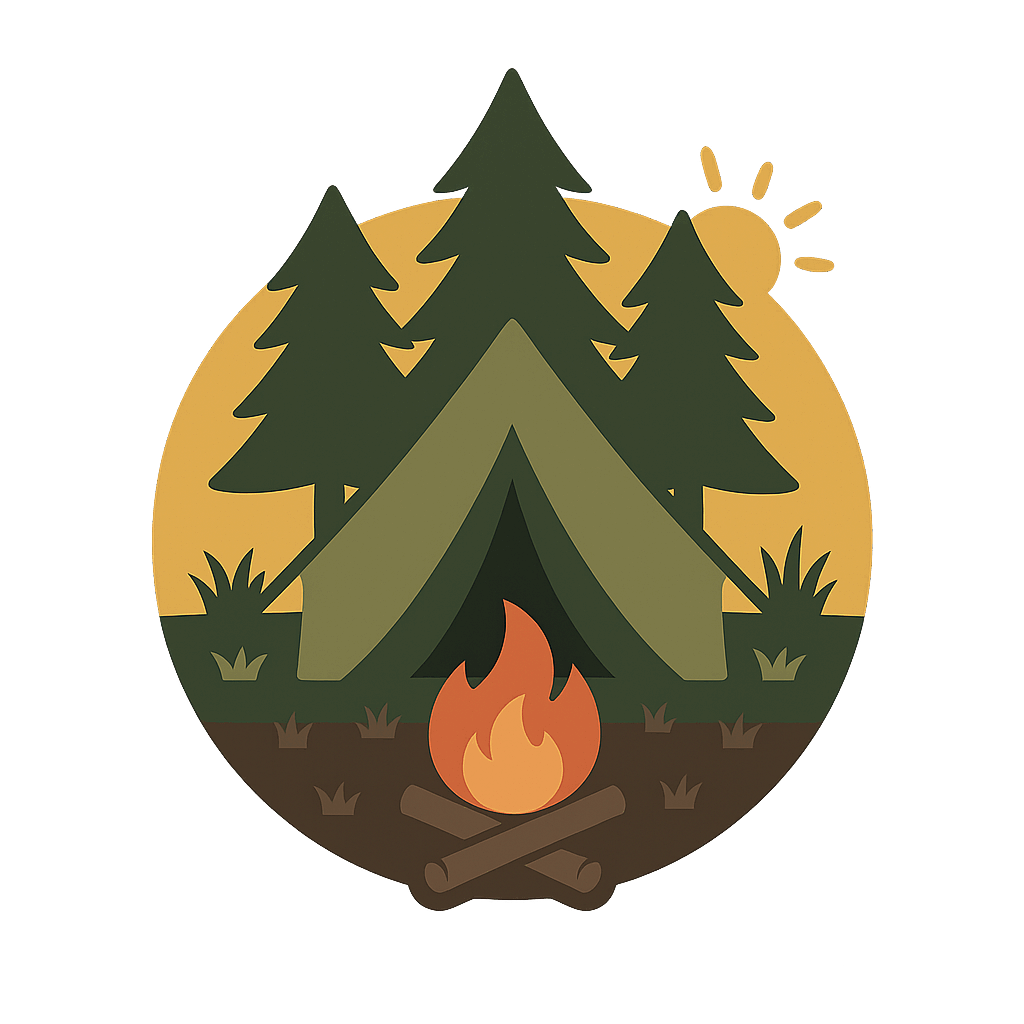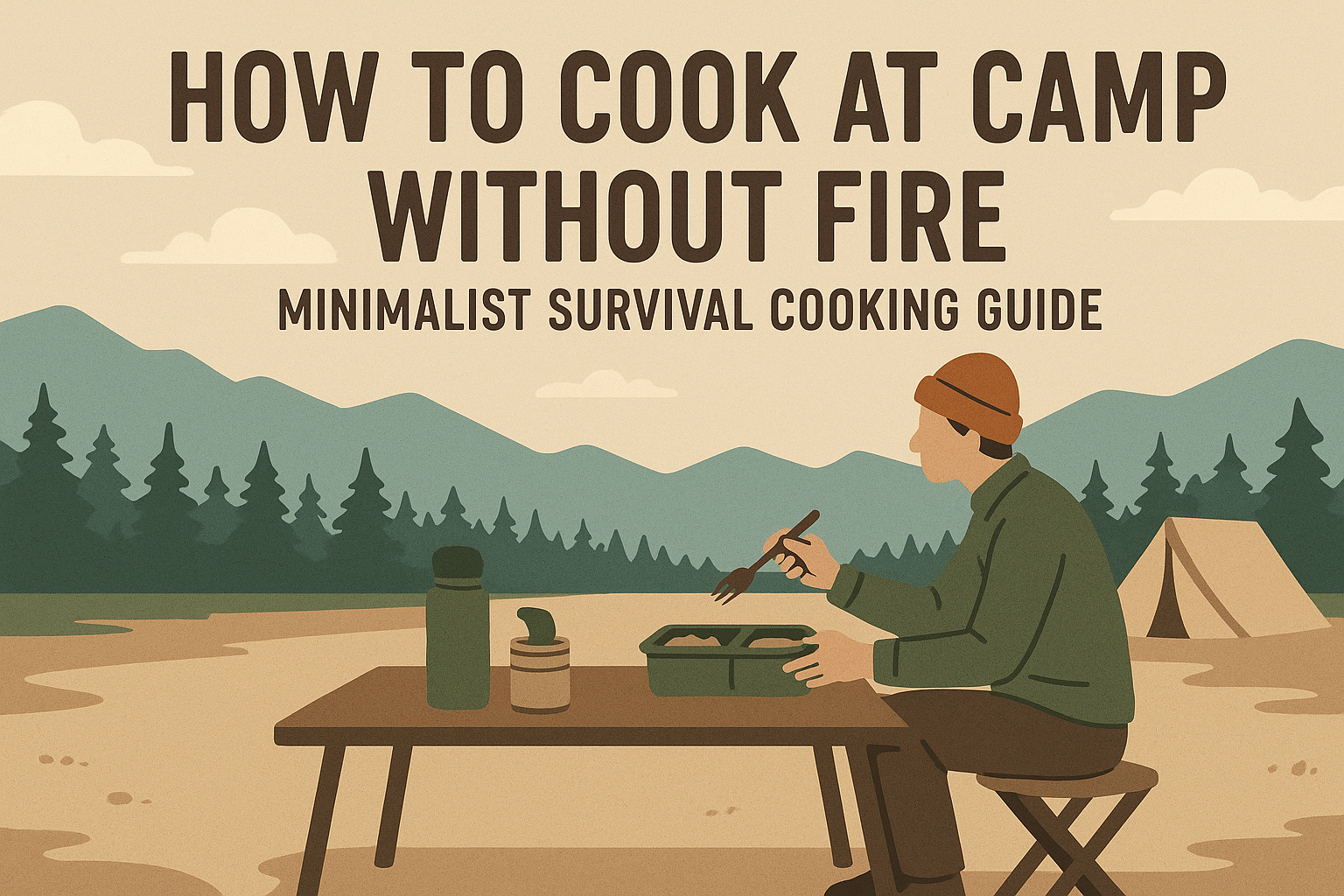You’re stranded.
The rain won’t stop.
Your fire starter failed.
There’s no dry wood, and your stove’s fuel is gone.
No flame. No fire. No easy way to cook.
Yet your body still needs calories to function — especially in survival cold.
True survivalists don’t give up when fire fails — they adapt.
Here’s how to cook at camp without fire, using minimalist, non-obvious survival techniques that can save your life when the flame goes out.
🛡 Core Principle: You’re Not Cooking — You’re Heat-Transforming
Forget fancy ideas of “cooking meals.”
In survival mode without fire, you are doing one of three things:
✅ Hydrating foods to make them edible
✅ Warming foods using passive or chemical heat sources
✅ Fermenting or soaking foods to unlock calories without flame
The goal isn’t taste.
It’s digestibility and survival fuel.
🥣 1. Cold Soaking (The Oldest Emergency “Cooking” Method)
What it is:
Using time and cold water to slowly hydrate foods.
Best foods for cold soaking:
- Rolled oats
- Ramen noodles (no cooking needed, just longer soak)
- Instant rice
- Couscous
- Dehydrated soups
How to do it:
- Place food in a sealed container.
- Add purified cold water.
- Let sit 30–90 minutes depending on food density.
Pro Survival Tip:
Add sugar, salt, or oil after soaking to supercharge calories.
Why it’s survival gold:
No flame. No fuel. No risk of wasting energy.
Cold-soaked meals still deliver glucose to the bloodstream.
Patience becomes your cooking fuel.
🧪 2. Chemical Cooking: Exothermic Reaction Heating
Field Hack:
Use self-heating meal packs (MRE flameless heaters) — or create your own exothermic heat pack.
If you have:
- MRE heaters
- Or homemade: quicklime (calcium oxide) + water
How to do it:
- Place your food pouch or metal container on top of an activated MRE heater or lime reaction.
- Let the chemical reaction heat your food passively.
Warning:
Never cook directly in chemical mixtures — use barriers like metal containers or thick plastic pouches.
Why it’s genius:
You generate 150–200°F without flames — enough to warm stews, water, or meats safely.
If you can boil with a rock, you can cook with a chemical.
🪨 3. Solar Cooking: Light-Based Survival Heating
Reality:
Even in survival, the sun is a free stove — if you know how to use it.
Simple field solar cooker:
- Use a mylar blanket, aluminum foil, or car windshield shade.
- Fold or bend into a parabolic (half-dome) shape.
- Place food in dark-colored container (black pots absorb more heat).
- Point directly at mid-day sun.
Pro Hack:
Place black containers inside clear plastic bags — traps additional greenhouse heat.
What it can do:
- Warm soups, stews, even slowly “bake” rice and grains.
- Pasteurize water (over 160°F for long enough kills most pathogens).
Reality Check:
Solar cooking is slow — plan for 2–4 hours for basic heating.
The sun doesn’t just light your way — it feeds you, if you build it right.
🥄 4. Rock Boiling: Ancient Heat Transfer Cooking
If you can make a small flame (even tiny), you don’t need a campfire.
Here’s how:
- Heat small stones (fist-sized) with even a tiny heat source (MRE heater, chemical stove, or coal pocket).
- Drop the hot stones into water containers carefully.
- Repeat with multiple stones to reach near-boiling temperatures.
Best for:
- Cooking rice
- Heating broths
- Making porridge
Field Tip:
Never use wet river rocks — they can explode. Only use dry, dense stones.
🥫 5. Carry Self-Heating Survival Foods (Field Ready Meals)
Packing smart = no cooking panic.
Survivalists pack:
- MREs (Meals Ready to Eat)
- Freeze-dried meals that can cold-soak
- Oil-packed tuna or salmon (eat straight)
- Canned soups that can be eaten cold (low preference, but survivable)
Pro Packing Tip:
Use squeeze-pouch versions (no can opener needed) for minimalist survival.
A survival pantry lives inside your pack — if you prepare before disaster.
🥶 6. Use Body Heat Cooking for Emergency Warming
Extreme Cold Survival Trick:
- Place sealed meal pouches inside your jacket, under armpits or thighs.
- Your body will slowly warm the food above freezing.
When to use:
- When ambient temperatures are below 32°F and everything freezes solid.
Why it’s critical:
- Eating frozen or icy food without thawing saps energy and internal body heat dangerously fast.
Bonus Survival Tip:
Hot food inside your jacket also works as a chest warmer temporarily.
You are your own camp stove.
🛠 7. Fermentation for Survival Calories (Multi-Day Survival Only)
Field reality:
If you’re truly stranded long-term, natural fermentation can pre-digest tough foods without fire.
Simple Field Fermentation:
- Mix grains, vegetables, or fruits with clean water.
- Let them sit 24–48 hours at mild temperatures (under 90°F).
Result:
- Microbes start breaking down starches.
- Mixture becomes softer, tangier, and easier to digest.
When to use:
- When energy supplies run low.
- When cooking is impossible for days.
Caution:
Only ferment if you have clean containers and safe water — or risk dangerous bacterial contamination.
In survival, rot is death — fermentation is life.
🏕 Emergency No-Fire Survival Cooking Recap
✅ Cold-soaking makes grains, pasta, and oats edible.
✅ Chemical reactions heat meals without flames.
✅ Solar setups slowly cook food using the sun’s free power.
✅ Rock boiling works when fires are tiny.
✅ Smart packing avoids cooking emergencies.
✅ Body heat can thaw survival meals in the worst conditions.
✅ Fermentation unlocks calories when everything else fails.
🌄 Conclusion: When the Flame Dies, Adapt or Starve
Survival isn’t about comfort meals.
It’s about fueling your body to walk, think, and fight another day.
When the stove breaks, the fire dies, or the rain soaks every match —
knowledge becomes your new cooking fuel.
Adapt the way you heat your food — and you adapt your odds of survival.
In survival, eating cold but alive is always better than starving warm dreams.

